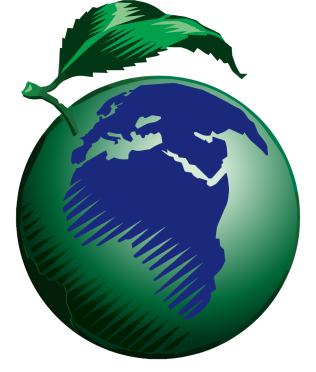Hello,
We are looking for any resources that may have been developed to support breastfeeding initiation and duration during periods of wildfire smoke exposure. We are aware of some research on breastmilk contamination from wildfire smoke, and also of research that shows that breastfeeding is generally recommended through exposure periods as the benefits outweigh the risks. We are looking for examples of resources that have been developed for healthcare workers or families. We would also love to hear if you have an experience to share about the need for these resources, or if you have experience with supporting/counselling families during periods of wildfire smoke inhalation - especially during evacuations.
Thank you,
Jodine Chase
SafelyFed Canada
Hi Jodine,
We have a fact sheet for mothers on breastfeeding in emergencies that was developed as a part of the Australian Breastfeeding Association Bushfire Project that includes some content on infant feeding behaviour in bushfire smoke that may assist https://www.breastfeeding.asn.au/emergency-resources-babies-and-toddlers
I have also written a couple of Conversation articles that may help.
https://theconversation.com/babies-and-toddlers-might-not-know-theres-a-fire-but-disasters-still-take-their-toll-129699
https://theconversation.com/no-stress-wont-dry-up-your-milk-how-to-keep-breastfeeding-your-baby-in-an-emergency-205031
All the research that I am aware of on smoke exposure and breastmilk/breastfeeding suggest that level of contaminants in breastmilk even with very heavy smoke exposure is low and I think that it's not that breastfeeding is generally recommended of mothers are exposed to bushfire smoke but that the recommendation to breastfeed is unchanged even when mothers are smoke exposed.
When it comes to counselling mothers in bushfires, the most common concerns are what is seen in any emergency related to low milk supply which are usually underpinned by infant behaviour change and maternal lack of confidence in breastfeeding. Helping women to understand their baby's behaviour, to assess milk sufficiency and providing reassurance assists mothers to keep breastfeeding.
Coming on and off the breast because of difficulty breathing is a bushfire-specifc feeding behaviour that is important that mothers know about and understand. We have a nice account of a breastfeeding counsellor doing this and the mum describing how this helped her to continue breastfeeding on page 38 of the report of the Babies and Young Children in the Black Summer Study https://www.breastfeeding.asn.au/sites/default/files/2023-06/BiBS%20Study%20Report%20Final.pdf
I hope this is helpful.
Answered:
9 months agoHi Jodine,
We have a fact sheet for mothers on breastfeeding in emergencies that was developed as a part of the Australian Breastfeeding Association Bushfire Project that includes some content on infant feeding behaviour in bushfire smoke that may assist https://www.breastfeeding.asn.au/emergency-resources-babies-and-toddlers
I have also written a couple of Conversation articles that may help.
https://theconversation.com/babies-and-toddlers-might-not-know-theres-a-fire-but-disasters-still-take-their-toll-129699
https://theconversation.com/no-stress-wont-dry-up-your-milk-how-to-keep-breastfeeding-your-baby-in-an-emergency-205031
All the research that I am aware of on smoke exposure and breastmilk/breastfeeding suggest that level of contaminants in breastmilk even with very heavy smoke exposure is low and I think that it's not that breastfeeding is generally recommended of mothers are exposed to bushfire smoke but that the recommendation to breastfeed is unchanged even when mothers are smoke exposed.
When it comes to counselling mothers in bushfires, the most common concerns are what is seen in any emergency related to low milk supply which are usually underpinned by infant behaviour change and maternal lack of confidence in breastfeeding. Helping women to understand their baby's behaviour, to assess milk sufficiency and providing reassurance assists mothers to keep breastfeeding.
Coming on and off the breast because of difficulty breathing is a bushfire-specifc feeding behaviour that is important that mothers know about and understand. We have a nice account of a breastfeeding counsellor doing this and the mum describing how this helped her to continue breastfeeding on page 38 of the report of the Babies and Young Children in the Black Summer Study https://www.breastfeeding.asn.au/sites/default/files/2023-06/BiBS%20Study%20Report%20Final.pdf
I hope this is helpful.
Answered:
9 months agoVery helpful, thank you.
Answered:
9 months agoHello Jodine,
From my IFE work, I have recently launched a music video on “Breastmilk is A Lifeline during Disasters”.
Here is the link: https://youtu.be/HdtCqBp61jg?si=yx91H3FTAhokOTnA
Here are a few add on publications from my work in disasters:
- Hirani, S. A. (2021). A policy brief on promotion, protection and support breastfeeding practices during disaster and displacement. Clinical Lactation, 12 (1), 30-38. http://dx.doi.org/10.1891/CLINLACT-D-20-00011.
- Hirani, S. A., Richter, S., Salami, B. (2021). Humanitarian aid and breastfeeding practices of displaced mothers: A qualitative study in disaster relief camps. Eastern Mediterranean Health Journal, 27 (12), 1197-1202. https://doi.org/10.26719/emhj.20.087
- Hirani, S. A. A, Richter, S., Salami, B., & Vallianatos, V. (2023). Sociocultural factors affecting breastfeeding practices of mothers during natural disasters: A critical ethnography in rural Pakistan. Global Qualitative Nursing Research, 10, 1-16. https://doi.org/10.1177/23333936221148808
Sincerely,
Shela Hirani
Answered:
8 months ago